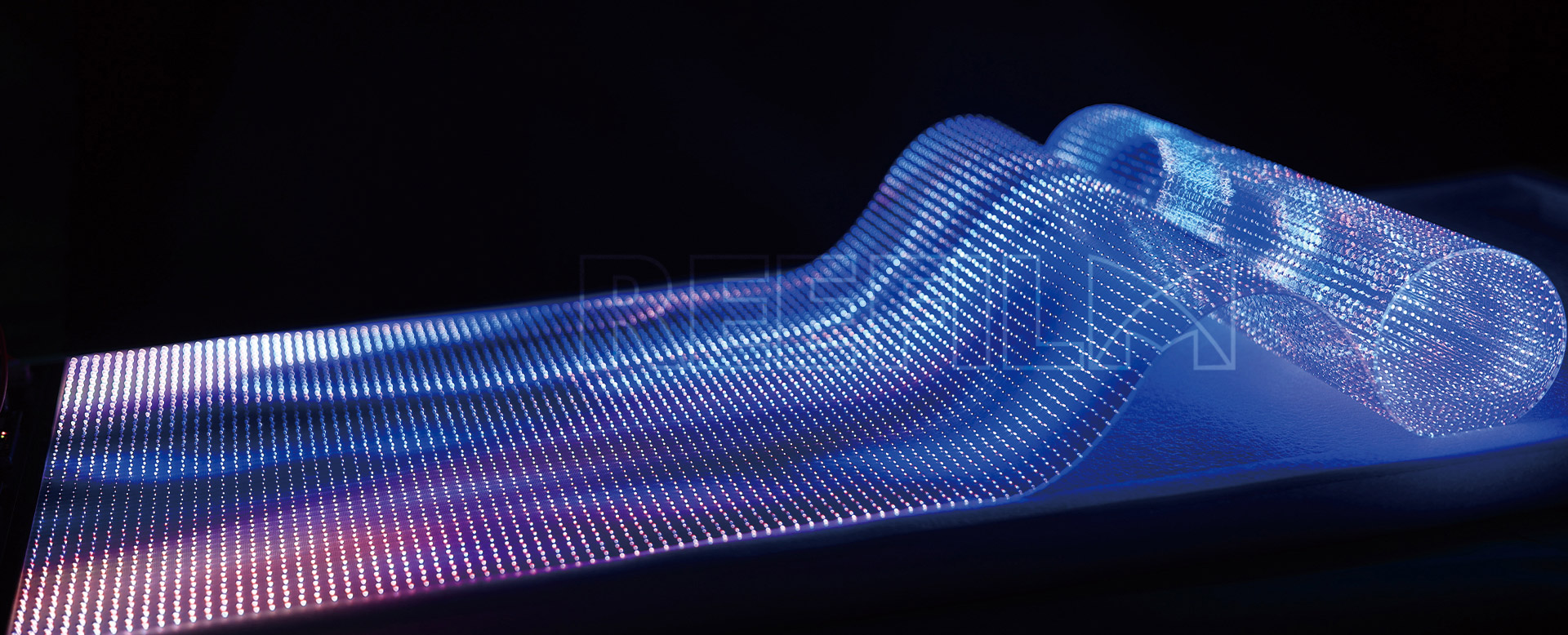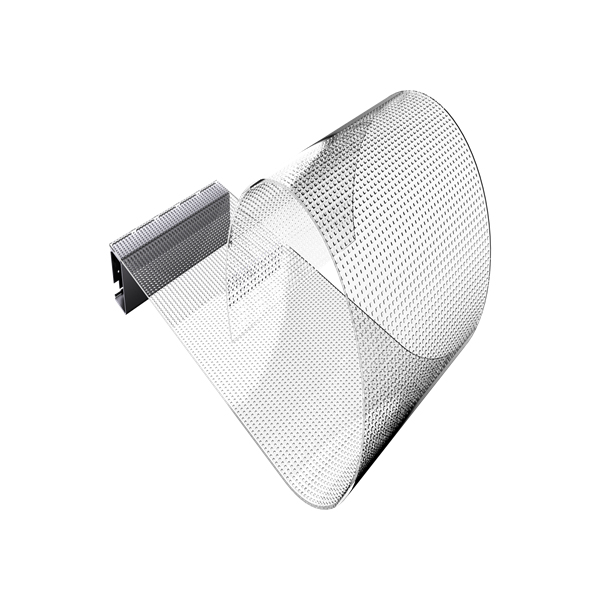
The relentless pursuit of innovation in display technology has given rise to a product that seamlessly blends the digital and physical worlds: the Led Transparent Film Screen. This revolutionary technology represents a significant leap forward from traditional Led Displays, offering a unique combination of high-resolution visual output and exceptional transparency. It is essentially a flexible, film-like display that allows light to pass through it when not actively displaying content, creating a "see-through" effect that traditional solid-state LED panels cannot achieve.

At its core, an Led Transparent Film Screen is built using fine-pitch LED chips mounted onto a transparent substrate, often a polycarbonate or PET film. The driving circuitry and power lines are designed to be as inconspicuous as possible, maximizing the transparent area. This design results in a display that is not only lightweight and flexible but also capable of maintaining a high level of transparency while delivering vibrant, dynamic content.
The defining features of LED Transparent Film Screens are rooted in their unique physical and optical properties, each supported by precise technical specifications.
High Transparency: This is the most distinctive feature. Unlike standard LED walls that are completely opaque, transparent film screens allow ambient light to pass through. The transparency rate typically ranges from 60% to 85%, depending on the pixel pitch and LED density. This high permeability ensures that the view through the screen is preserved, making it ideal for storefronts and architectural integration.
Lightweight and Flexible: The use of a film substrate instead of a heavy metal cabinet structure results in an extremely low weight. The screen weighs between 1.5 to 3 kg per square meter, which is less than 30% of the weight of a conventional LED display. Its flexibility allows it to be curved to a certain radius, enabling creative installations on non-flat surfaces and offering designers greater artistic freedom.
Fine Pixel Pitch: Pixel pitch, the distance from the center of one LED cluster to the next, directly impacts image clarity. Transparent film screens are available in pitches as fine as P1.8 to P10. A smaller pitch, such as P2.5 or P3.9, allows for a higher pixel density, producing sharper and more detailed images suitable for close-viewing applications.
High Brightness and Contrast: To remain visible in brightly lit environments, these screens boast high brightness levels, usually between 5,000 to 6,000 nits. Advanced surface treatment and black LED packaging technology enhance the contrast ratio, ensuring that colors appear deep and vivid even with high ambient light passing through the screen.
Easy Installation and Maintenance: The modular and lightweight nature of the film panels simplifies the installation process. They can be directly attached to glass surfaces using a magnetic or adhesive system. Furthermore, many models feature front-serviceability, allowing technicians to replace individual LED modules or power supplies from the front without needing access to the rear of the installation, a critical advantage for built-in setups.
Energy Efficiency: Due to the lower density of LEDs per unit area compared to a standard display and the use of energy-efficient LED chips, transparent film screens consume significantly less power. Power consumption can be as low as 200-300 watts per square meter under normal operating conditions, reducing operational costs and environmental impact.
The unique characteristics of LED Transparent Film Screens open up a wide array of application scenarios across various industries, transforming spaces and enhancing user engagement.
Retail and Commercial Display: In retail environments, these screens are installed on storefront windows, allowing businesses to showcase dynamic advertisements and promotional videos without completely blocking the view into the store. This attracts the attention of passersby while maintaining an open and inviting atmosphere. They are also used inside stores for interactive product displays and digital signage on glass partitions.
Architectural Integration and Building Facades: Architects and designers utilize transparent film screens to turn building facades, glass curtains, and atriums into large-scale digital canvases. By day, the building maintains its aesthetic transparency; by night, it can transform into a spectacular media facade for branding, art, or information display, without compromising the building's original design intent.
Stage and Event Production: In concerts, theater productions, and corporate events, these screens are used as stage backdrops. They enable performers to be seen through the screen when it's transparent, creating layered visual effects and immersive backgrounds. Special effects, graphics, and live feeds can be displayed while maintaining a sense of depth on stage.
Museums, Galleries, and Exhibitions: Museums employ this technology to create interactive exhibits where digital information and animations can be overlaid on physical artifacts displayed behind glass. This enhances the educational value without obstructing the view of the exhibit itself, providing a seamless blend of the real and the virtual.
Transportation Hubs and Hospitality: Airports, train stations, and luxury hotels use transparent film screens for information kiosks, wayfinding systems, and decorative elements in lobbies. They provide real-time information in a modern and aesthetically pleasing format that does not create a visual barrier in spacious, open-plan areas.
Proper maintenance is crucial for ensuring the long-term performance, reliability, and visual quality of an LED Transparent Film Screen. A systematic approach to care can significantly extend the product's lifespan.
Regular Cleaning: Dust and dirt can accumulate on the surface, reducing brightness and clarity. Power off the screen completely before cleaning. Use a soft, dry, lint-free cloth or a gentle air duster to remove loose particles. For stubborn smudges, lightly moisten the cloth with purified water or a specialized screen cleaning solution—never spray liquid directly onto the screen. Gently wipe the surface in one direction, avoiding excessive pressure that could damage the LEDs.
Environmental Considerations: Although many screens are designed for indoor use with some weather-resistant variants for protected outdoor areas, it is vital to control the operating environment. Maintain a stable ambient temperature and avoid excessive humidity. Ensure good ventilation around the screen to prevent heat buildup, which can affect LED lifespan and color stability.
Software and Content Management: Regularly update the control system software and firmware to access performance improvements and bug fixes. When creating content, consider the screen's transparency. Using content with black backgrounds (which appear transparent) is most effective. Avoid static images being displayed for prolonged periods to prevent potential image retention, even though the risk is lower than with OLED technology.
Routine Inspection and Professional Servicing: Conduct periodic visual inspections to check for any dead pixels, color inconsistencies, or physical damage to the film. Schedule professional maintenance at least once a year. A qualified technician should inspect electrical connections, power supplies, and data transmission lines to ensure everything is secure and functioning within specified parameters. For complex issues like module failure, always rely on certified technicians for replacement to maintain the screen's integrity and warranty.
Proper Handling and Storage: If modules need to be stored or transported, keep them in their original anti-static packaging. Store them in a cool, dry, flat position to prevent warping or stress on the flexible film. Always handle the modules by their edges to avoid putting pressure on the LED surface.
Previous: What Is A Flexible Led Screen Panel?